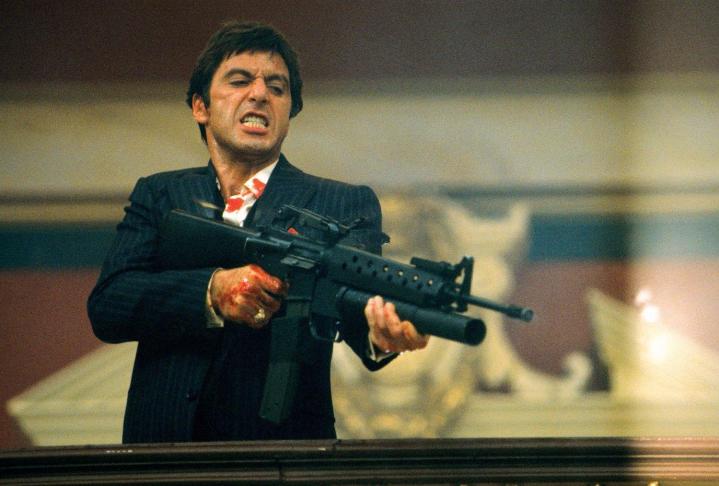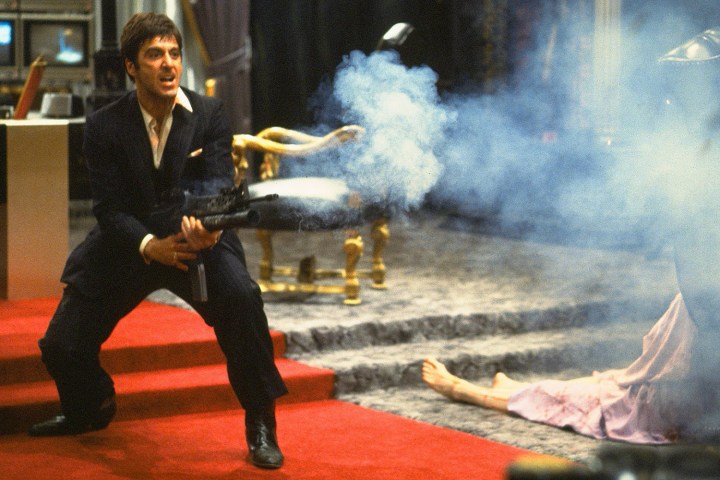
The greatest gangster movies are also often the best in the wider crime genre, with each being a masterpiece that portrays its own unique gritty underworld full of flawed characters. Whether it’s classic tales of organized crime that offer a peek behind the curtain or modern-day dramas that can move or shock audiences, these gangster films are important works that represent the best the genre can offer.
From the intense realism of City of God to the iconic brilliance of The Godfather, they may all depict criminals, but their stories are diverse and complex, offering varied entertainment value for every type of viewer. These cinematic thrills dive deep into the criminal underworld where violence, drama, and high-stakes situations are the norm.
7. City of God (2002)

Set in the impoverished favelas of Rio de Janeiro, City of God chronicles the rise of organized crime through the perspective of two boys who choose two vastly different paths. Rocket (Alexandre Rodrigues) and Lil’ Ze (Leandro Firmino) may have similar backgrounds, but one of them works toward becoming a talented photographer while the other turns into a ruthless drug leader.
Directed by Fernando Meirelles and Kátia Lund, City of God put Brazilian cinema on the map thanks to its raw and brutally honest depiction of life in the favelas. The film was also shot on location in these neighborhoods and stars actual residents from the favelas, which adds authenticity and believability to its disturbing story. The 2002 movie is a crucial depiction of how poverty and systemic inequality help perpetuate a never-ending cycle of violence in places like the Cidade de Deus.
6. Casino (1995)

Many of director Martin Scorsese’s best movies revolve around organized crime, and 1995’s Casino is no exception. Inspired by real-life gangsters, the epic crime film is centered on the rise and fall of Sam “Ace” Rothstein (Robert De Niro), a skilled gambler entrusted by the mob to oversee the Tangiers Casino in Las Vegas. Complicating matters are his volatile friend, Nicky Santoro (Joe Pesci), dangerous higher-ups in the mob, and his complicated love interest, Ginger McKenna (Sharon Stone).
Casino gives audiences a thrilling story that imagines what criminal activity could look like behind the scenes in some of Sin City’s most glamorous locations. Sam has to deal with all kinds of trouble, including cheating, skimming, kidnapping, and even murder, and not even his strategic approach can protect his new empire. The protagonist’s messy life is perfectly captured by an incredible performance from De Niro, who marked his eighth collaboration with Scorsese with this film.
5. Scarface (1983)

“Say hello to my little friend!” Scarface is a massively popular and beloved gangster movie that’s a remake of the 1932 film ofn the same name. Directed by Brian De Palma, the 1983 movie is set in the gritty underworld of 1980s Miami, where Cuban immigrant Tony Montana (Al Pacino) becomes a powerful drug lord. The film portrays Tony’s harsh climb to the top of the criminal hierarchy, as well as his increasingly unstable empire, which soon crumbles and leads to his tragic downfall.
Scarface has an enduring place in pop culture thanks to its quotable lines and scenes of extreme violence. The film benefits from De Palma’s stylistic direction, with the cult classic being remembered for its over-the-top moments that make it wildly entertaining. Of course, Scarface also features Al Pacino in one of his most iconic roles, with the film’s ridiculous story propelled by his bombastic and charismatic performance as the flawed lead.
4. Once Upon a Time in America (1984)

Director Sergio Leone’s final movie before his death in 1989 is an epic crime film that would leave a mark on the gangster genre. Once Upon a Time in America is a sweeping epic that spans decades and follows the lives of a group of Jewish gangsters in New York City from their youth in the 1920s through the 1960s. The film primarily centers on David “Noodles” Aaronson (Robert De Niro) and his childhood friend, Maximilian “Max” Bercovicz (James Woods), as they lead a group of ghetto youths who eventually become powerful gangsters.
A one-of-a-kind look at the world of organized crime in New York City, the 1984 movie showcases how effective storytelling that spans decades can be in conveying both a grand and incredibly intimate narrative of friendship and the American dream. Once Upon a Time in America is one of the longest Hollywood movies ever made, and it earns every minute of its four-hour runtime.
3. Goodfellas (1990)

Goodfellas is a biographical crime film that tells the story of mob associate Henry Hill (Ray Liotta), who is initially drawn to the mafia because of their strong presence in his neighborhood in Brooklyn. He eventually completely embraces the gangster lifestyle and all of his new friends. The glamorous side of his criminal enterprise can’t hide the danger and brutality, though, and Henry’s steady climb to success will eventually end with a painful fall.
The 1990 movie is director Martin Scorsese’s greatest gangster film, and it showcases his trademarks at their very best, including voice-over narration and innovative freeze frames. It has stylish visuals, an impeccably cast ensemble, a flawless soundtrack, and a mobster story that makes excellent use of the rise-and-fall formula. With its portrayal of both the lavish aspects and terrifying realities of life as a mobster, Goodfellas is an essential entry that perfectly encapsulates the genre.
2. The Godfather (1972)

Director Francis Ford Coppola’s The Godfather is a film that needs no introduction. Based on Mario Puzo’s 1969 novel, the movie depicts the complicated lives of the Corleone crime family, led by patriarch Vito Corleone (Marlon Brando). It particularly focuses on his son Michael (Al Pacino), who’s initially reluctant to join the family business, but eventually transforms into an unforgiving mafia boss.
A groundbreaking and award-winning work, The Godfather is the most influential gangster movie ever, and is often credited with reshaping the genre through its depiction of the inner workings of the mafia. Instead of straightforward villains, the 1972 film introduces complex characters with hopes, fears, and desires, all captured in a riveting drama set against an uncertain post-World War II America. The Godfather would spawn a legendary trilogy that’s widely considered a cinematic treasure that’s still studied and referenced today.
1. The Godfather Part II (1974)

The Godfather Part II expands the Corleones’ epic story in darker and even more tragic ways. Serving as both a sequel and prequel film, it uses flashbacks to tell the story of the rise of Vito Corleone (Robert De Niro) as a young immigrant from Sicily to a feared gangster in New York City. In the present, the reign of his son Michael (Al Pacino) as the new Don is met with challenges as danger lurks in every corner.
Coppola’s meticulous direction and storytelling are on display in this continuation of the Corleones’ arcs. The 1974 film is more impressive in almost every way, with lavish sets, an incredible score, and a more gripping story that makes its three-hour runtime fly by. Robert De Niro and Al Pacino also deliver career-best performances that help anchor the film’s ambitious narrative structure. The intertwining storylines are seamlessly portrayed in this sequel that completely immerses viewers in a family saga that remains one of cinema’s greatest achievements.



